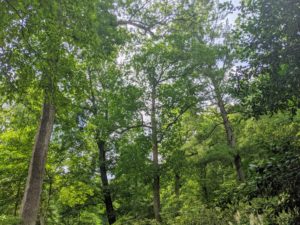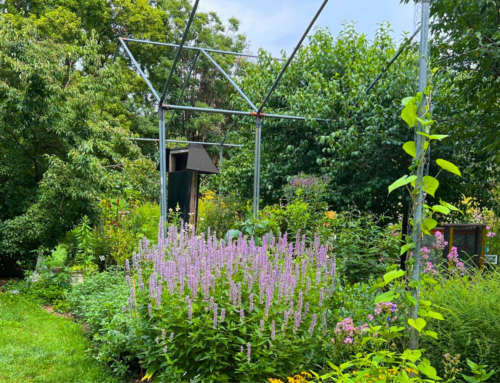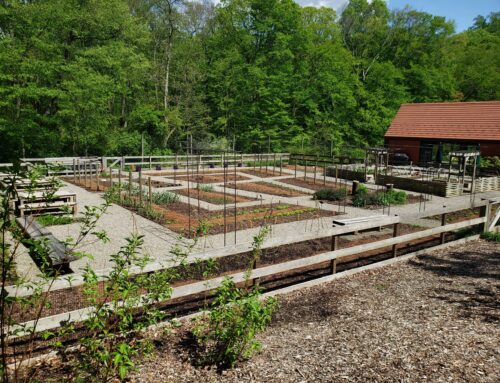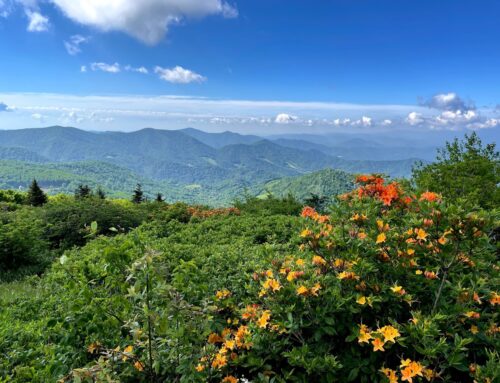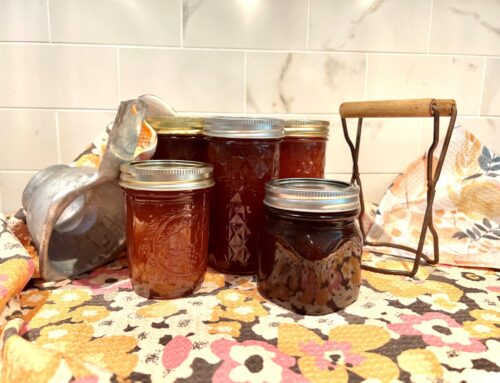The weather is cool, with gray skies and an even, misty rain that the wool I’m wearing mostly keeps out. I didn’t expect this coolness, considering how far south I am. The country of Ecuador, bisected here by a place called Mitad del Mundo, the middle of the earth. I’m here on a grant, to visit with some of the local tribes and learn about their complicated involvement with conservation projects in the country. Despite having lived in the mountains, forests and grasslands of Ecuador for thousands of years, these tribes have no rights to their land.
My guide for the day is a man named Cesar, a member of the Otavalo tribe. He wears a faded fedora, his dark hair in a braid down his back, beaded with rain. We are hiking through the steep hillsides of Mt. Cotopaxi, one of Ecuador’s most active volcanoes. He is a quiet hiker. His English is very good, but most of our group does not speak Spanish and he walks with an inward expression – preferring perhaps to keep his thoughts to himself about leading this noisy group of American tourists through his home.
He stops when a vista opens up, a hillside of soft colors – purples, yellows and greens.
“This is an Inca garden,” he says, his voice so quiet in the wind that I need to step closer to hear him.
“Is there a village here?” I ask, in the best Spanish I can.
“No.” He looks out at the garden, rather than at me, and speaks, still in English. “This is Otavalo land. They came later. They are not here anymore.”
“Do you keep this garden?” I ask him. I can see it now; the soft curves of the terraces, the flowers and the grasses.
“No,” he says.
“Then who cares for it?” I reply, like a good gardener. It is huge, this expanse of hillside. “I would love to meet with the person who keeps it.”
“It keeps itself,” he says and continues to walk.
We talk later, Cesar and I, back in his village over tiny cups of warm, pulpy fruit juice. I do not know what the juice is, or how it is made, but I drink it beside the fire in the lodge as the six o’clock darkness settles on the mountains outside. Cesar is more relaxed here. There is music and three little boys are playing and dancing. The garden keeps itself, he explains, because it was planted to do so. Food crops, flowers and grasses are all planted together to feed the soil, support one another, and bring wildlife in to pollinate and make fruit. Permaculture, I realize. A very new word for a very old idea.
Cesar says something softly to an older woman and I strain to translate the unfamiliar Spanish words – before realizing that he is not speaking Spanish at all. It’s likely Kichwa, the dialect of the Incan Quechua spoken here in the mountains. Kichwa replaced the original language spoken by Cesar’s people, so I don’t ask, for fear of offending him. I have learned that the Inca are not much beloved of the Otavalo.
“That is the best way to farm here,” Cesar tells me, switching back to English.
“Can you tell me more?” I ask him, in English too, because I realize that to him one second language must seem as good as any other.
He does. He tells me that growing food in these rocky hills, so high in elevation, is not easy and that the Otavalo – and the Inca – needed to be very clever about it. They had to be mindful of space and thoughtful of soil, and keep animals for food that were also resource-efficient. This explains the very small drumsticks I ate for dinner, a local dish called cuy that I learned is guinea pig. He tells me about the raised beds the Otavalo construct called waru waru, to manage the flow of water.
It was striking to me, and I thought of it often when I went back to the states for my senior year of college. I went to school on the Eastern Shore of Maryland, at tiny Washington College, a postage stamp of a school amid sweeping fields of corn, soy and alfalfa. Those fields, dark green one day then empty brown soil the next, could not be more different than the interwoven Inca garden. These fields do not keep themselves, I would think, watching the farmers drive their tractors back and forth in neat, clean lines.
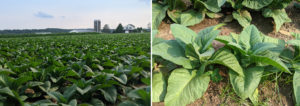
Tobacco field in Nottingham, PA
But why not? What is the difference? I studied environmental science and anthropology in college. I would think about it as I did my classes, which since I was a senior involved a fair amount of wading through poison ivy, taking DBH measurements, or swatting mosquitoes as I sampled water in the marsh down by the college’s boathouse. What makes one patch of land manage itself, and another need intensive care?
The difference, of course, is that one place is an ecosystem, and the other is a factory.
An ecosystem, especially a rich and productive one like a marsh or a forest edge, must maintain itself to survive. It cannot do so without providing for every layer of life within it, from the tiniest microbe in the soil to the highest leaf on the tree. We’ve long known this as a human species, even if we’ve gotten away from that knowledge. We gravitate to those spaces; to the coast, where the marshes teem with life, to the edge of the forest where the breaks in the canopy let light to the forest floor. These are places where there is a tremendous wealth of food to be found. Living is easy where the ecosystem is rich. Whether it is the small brown hazelnuts wrapped in their papery husks, sweet paw-paw fruit, starchy cattail tubers or fresh green fiddleheads – there is always something to eat.
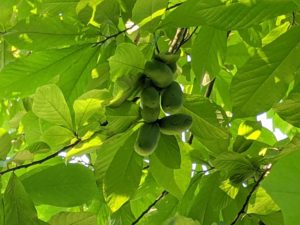
Paw-paw, Asimina triloba
So how can we incorporate that into our gardens? Can we recreate this paradise of food for everyone, from humans to insects? That’s exactly what groups like Project Food Forest aim to do. It’s an ambitious goal to plant diverse food gardens that do not need to be replanted yearly — gardens that can sustain a little damage from deer browse, a visit from a rabbit or children running beneath the trees. Their goal is to be a functional, energy neutral landscape where humans and everyone else can find food. And they work. Take a look at the Beacon Food Forest in Seattle, the Urban Food Forest in Roanoke Virginia, or the Community Food Forest in Atlanta, Georgia. All of these projects prove a concept that doesn’t need to be proven – a healthy ecosystem supports everyone.
It’s not often that we are given a chance to re-examine our idea of paradise. Our daily lives follow a pattern — a cup of coffee, a commute, an eight (or more) hour workday and home again to care for our houses and families. Woven through all of that is the food we eat — a banana from South America, an apple from New Zealand, meat from a large-scale farm out west or perhaps even farther. We don’t see the invisible work that went into bringing that food to us — the trees cut down, the chemicals applied to keep it looking perfect and the fossil fuels that bring it to the local supermarket. We don’t see the bees, the bats or the butterflies that stopped by to pollinate or failed to stop because their numbers are declining. We don’t see the hands that picked the fruit or packed the meat.
If we did, I’m not sure we’d think it looked like paradise. But a hillside garden filled with flowers, a tomato grown in my backyard picked by my son, a sweet paw-paw, a fresh hazelnut? All of that is paradise to me.
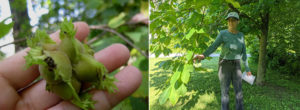
At Tyler, we ask that you do not pick and eat wild foods. We ask that because we are not depending on that ecosystem. We can go to the grocery store for our dinner while the wild animals that live on the property cannot. But let’s imagine for a moment a food forest for each of our communities — the dappled shade of the trees and the soft groundcover of sweet strawberries. Picture flowers full of bees, butterflies, and other pollinators, blueberries warm from the sun, wild grapes and earthy mushrooms cooked in butter. Envision fresh eggs from the chickens who forage in the leaf litter. Picture letting children play on the shaded paths, as parents and grandparents sit on quiet benches. Imagine meals eaten together while the fireflies dance.
Doesn’t that sound like paradise?
